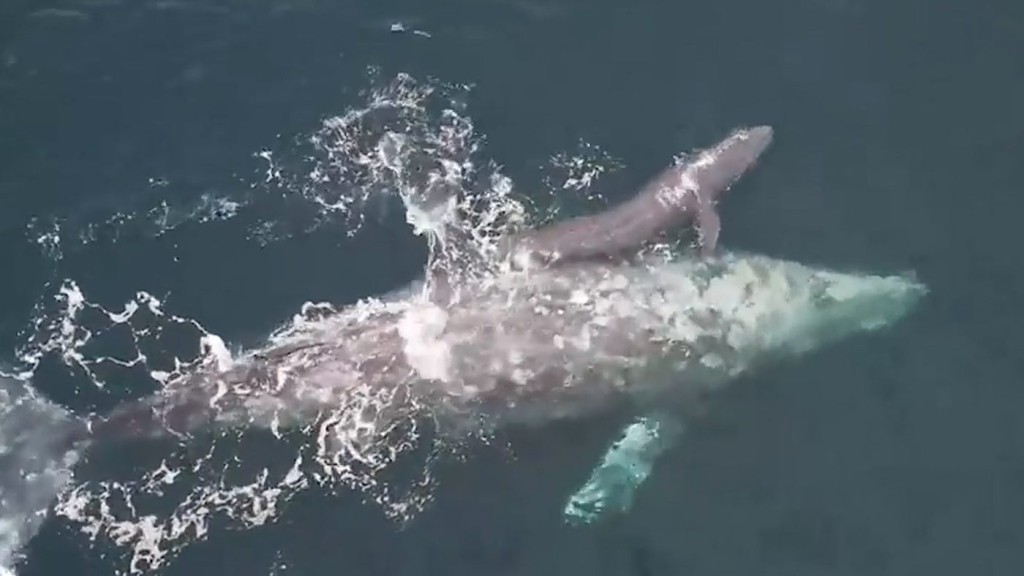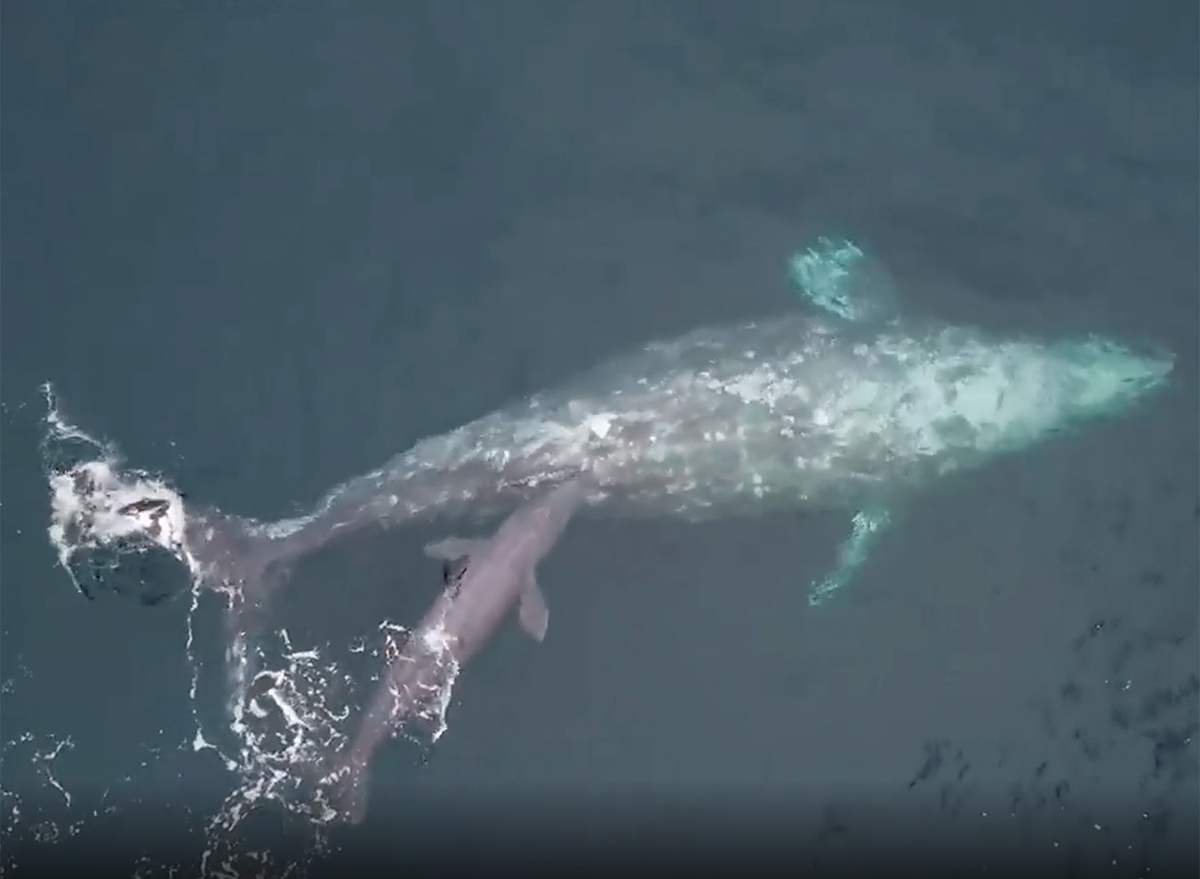While on a recent whale-watching cruise off the coast of California, a group of lucky passengers witnessed something truly spectacular: the birth of a gray whale calf. Footage of the “once-in-a-lifetime sighting” shows the mother and her newborn calf sharing their first moments together while boats, chock full of stunned whale watchers, bob nearby.

The rarely seen event took place on 2 January just a few miles off the coast of Dana Point in Orange County, according to the team at Capt. Dave’s Dana Point Dolphin & Whale Watching Safari who uploaded the footage to their YouTube channel. The tour group initially spotted a gray whale estimated to be around 40 and 50 feet (12 to 15 metres) in length, which they suspected was one of many that migrate along a back-and-forth route between their Mexican breeding grounds and the cold, nutrient-rich waters of the Arctic.
As they approached, the whale began acting sporadically, and the tour operators noticed a small pool of blood on the surface of the water near the massive mammal. Worried onlookers feared the whale was under attack from a shark, but were pleasantly surprised when a tiny calf emerged to take its first breath.

“After surfacing, the newborn calf began learning how to swim and bonding with its mother,” the team explained in the video description. “The female even brought the calf over to the boats as if to show off her offspring and say hello.”
The mama whale swam alongside her calf, gently nudging the newborn to the surface and positioning herself underneath the youngster allowing it to rest near her face. Gray whales are born with soft tails (or flukes) which can take a day to stiffen up, marine biologist Alisa Schulman-Janiger told NPR. “The mom is holding the calf up, supporting it so the calf can rest and [is] actually helping it be able to take a breath,” she explained.

These intimate moments of contact also help strengthen the bond between mother and calf, something that land mammals would usually do by smelling one another.
Gray whales typically give birth in protected lagoon waters in Baja California, Mexico, where predators like orcas are less likely to target the calves and the youngsters that are yet to build up their blubber are not threatened by frigid water temperatures. However, “there are times when calves just won’t wait and are born during the migration,” the team from Capt. Dave’s Dana Point Dolphin & Whale Watching Safari explain.
This mother was likely on her way south to Baja California having already traveled thousands of kilometres from her feeding grounds in the Bering and Chukchi Seas near Alaska. This annual migration along the U.S. west coast is one of the longest undertaken by any mammal species.
It’s hoped that the youngster will survive in the dangerous open waters, especially considering gray whale population numbers in the North Pacific are on the decline. In 2022, populations were estimated at 16,650, down from 27,000 just 6 years prior. Strandings caused by an unusual mortality event are at least partly to blame for the decline.









